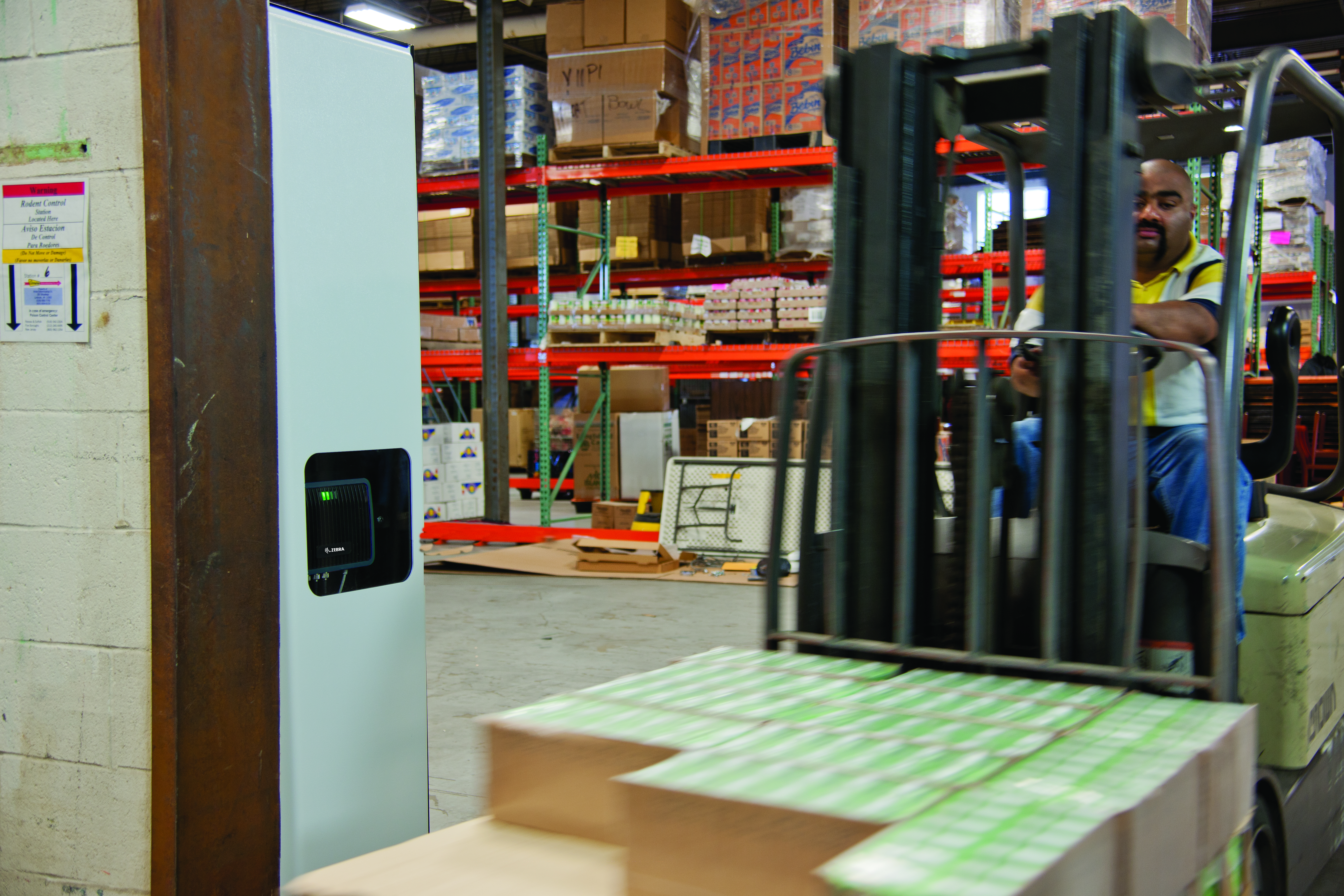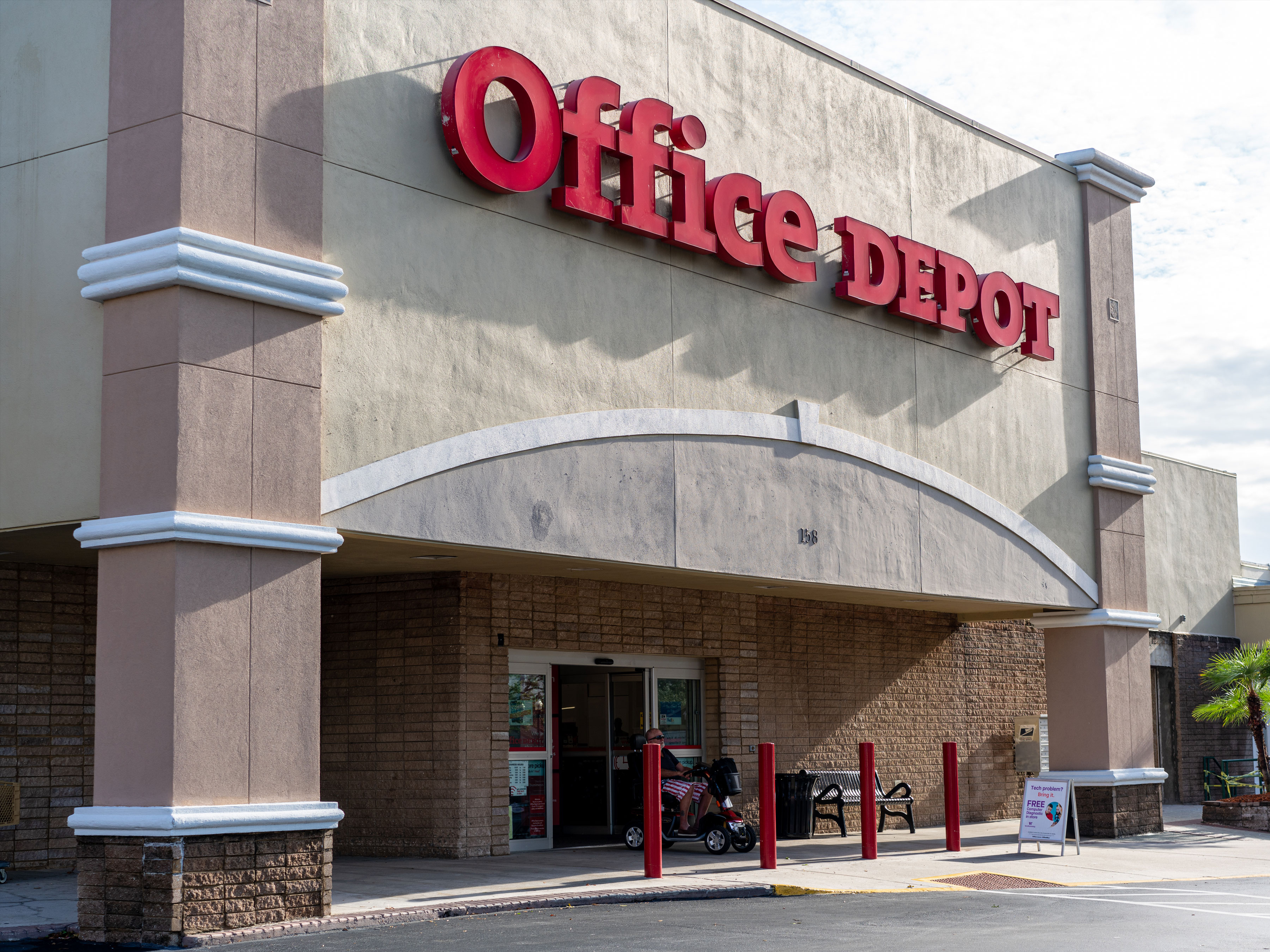Transform retail operations with Zebra’s retail technology solutions, featuring hardware and software for improving inventory management and empowering teams.
Streamline operations with Zebra’s healthcare technology solutions, featuring hardware and software to improve staff collaboration and optimize workflows.
Enhance processes with Zebra’s manufacturing technology solutions, featuring hardware and software for automation, data analysis, and factory connectivity.
Zebra’s transportation and logistics technology solutions feature hardware and software for enhancing route planning, visibility, and automating processes.
Learn how Zebra's public sector technology solutions empower state and local governments to improve efficiency with asset tracking and data capture devices.
Zebra's hospitality technology solutions equip your hotel and restaurant staff to deliver superior customer and guest service through inventory tracking and more.
Zebra's market-leading solutions and products improve customer satisfaction with a lower cost per interaction by keeping service representatives connected with colleagues, customers, management and the tools they use to satisfy customers across the supply chain.
Empower your field workers with purpose-driven mobile technology solutions to help them capture and share critical data in any environment.
Zebra's range of Banking technology solutions enables banks to minimize costs and to increase revenue throughout their branch network. Learn more.
Zebra's range of mobile computers equip your workforce with the devices they need from handhelds and tablets to wearables and vehicle-mounted computers.
Zebra's desktop, mobile, industrial, and portable printers for barcode labels, receipts, RFID tags and cards give you smarter ways to track and manage assets.
Zebra's 1D and 2D corded and cordless barcode scanners anticipate any scanning challenge in a variety of environments, whether retail, healthcare, T&L or manufacturing.
Zebra's extensive range of RAIN RFID readers, antennas, and printers give you consistent and accurate tracking.
Choose Zebra's reliable barcode, RFID and card supplies carefully selected to ensure high performance, print quality, durability and readability.
Zebra's rugged tablets and 2-in-1 laptops are thin and lightweight, yet rugged to work wherever you do on familiar and easy-to-use Windows or Android OS.
With Zebra's family of fixed industrial scanners and machine vision technologies, you can tailor your solutions to your environment and applications.
Zebra’s line of kiosks can meet any self-service or digital signage need, from checking prices and stock on an in-aisle store kiosk to fully-featured kiosks that can be deployed on the wall, counter, desktop or floor in a retail store, hotel, airport check-in gate, physician’s office, local government office and more.
Adapt to market shifts, enhance worker productivity and secure long-term growth with AMRs. Deploy, redeploy and optimize autonomous mobile robots with ease.
Discover Zebra’s range of accessories from chargers, communication cables to cases to help you customize your mobile device for optimal efficiency.
Zebra's environmental sensors monitor temperature-sensitive products, offering data insights on environmental conditions across industry applications.
Zebra's location technologies provide real-time tracking for your organization to better manage and optimize your critical assets and create more efficient workflows.
Enhance frontline operations with Zebra’s AI software solutions, which optimize workflows, streamline processes, and simplify tasks for improved business outcomes.
Empower your frontline with Zebra Companion AI, offering instant, tailored insights and support to streamline operations and enhance productivity.
The everything you need to rapidly and cost effectively develop high-performance AI vision applications on Zebra mobile computers.
Zebra Frontline AI Blueprints deliver adaptable, real-world AI frameworks that automate manual tasks and drive efficiency in high-pressure frontline operations.
Zebra Workcloud, enterprise software solutions boost efficiency, cut costs, improve inventory management, simplify communication and optimize resources.
Keep labor costs low, your talent happy and your organization compliant. Create an agile operation that can navigate unexpected schedule changes and customer demand to drive sales, satisfy customers and improve your bottom line.
Drive successful enterprise collaboration with prioritized task notifications and improved communication capabilities for easier team collaboration.
Get full visibility of your inventory and automatically pinpoint leaks across all channels.
Reduce uncertainty when you anticipate market volatility. Predict, plan and stay agile to align inventory with shifting demand.
Drive down costs while driving up employee, security, and network performance with software designed to enhance Zebra's wireless infrastructure and mobile solutions.
Explore Zebra’s printer software to integrate, manage and monitor printers easily, maximizing IT resources and minimizing down time.
Make the most of every stage of your scanning journey from deployment to optimization. Zebra's barcode scanner software lets you keep devices current and adapt them to your business needs for a stronger ROI across the full lifecycle.
RFID development, demonstration and production software and utilities help you build and manage your RFID deployments more efficiently.
RFID development, demonstration and production software and utilities help you build and manage your RFID deployments more efficiently.
Zebra DNA is the industry’s broadest suite of enterprise software that delivers an ideal experience for all during the entire lifetime of every Zebra device.
Advance your digital transformation and execute your strategic plans with the help of the right location and tracking technology.
Boost warehouse and manufacturing operations with Symmetry, an AMR software for fleet management of Autonomous Mobile Robots and streamlined automation workflows.
The Zebra Aurora suite of machine vision software enables users to solve their track-and-trace, vision inspection and industrial automation needs.
Zebra Aurora Focus brings a new level of simplicity to controlling enterprise-wide manufacturing and logistics automation solutions. With this powerful interface, it’s easy to set up, deploy and run Zebra’s Fixed Industrial Scanners and Machine Vision Smart Cameras, eliminating the need for different tools and reducing training and deployment time.
Aurora Imaging Library™, formerly Matrox Imaging Library, machine-vision software development kit (SDK) has a deep collection of tools for image capture, processing, analysis, annotation, display, and archiving. Code-level customization starts here.
Aurora Design Assistant™, formerly Matrox Design Assistant, integrated development environment (IDE) is a flowchart-based platform for building machine vision applications, with templates to speed up development and bring solutions online quicker.
Designed for experienced programmers proficient in vision applications, Aurora Vision Library provides the same sophisticated functionality as our Aurora Vision Studio software but presented in programming language.
Aurora Vision Studio, an image processing software for machine & computer vision engineers, allows quick creation, integration & monitoring of powerful OEM vision applications.
Adding innovative tech is critical to your success, but it can be complex and disruptive. Professional Services help you accelerate adoption, and maximize productivity without affecting your workflows, business processes and finances.
Zebra's Managed Service delivers worry-free device management to ensure ultimate uptime for your Zebra Mobile Computers and Printers via dedicated experts.
Find ways you can contact Zebra Technologies’ Support, including Email and Chat, ask a technical question or initiate a Repair Request.
Zebra's Circular Economy Program helps you manage today’s challenges and plan for tomorrow with smart solutions that are good for your budget and the environment.
The Zebra Knowledge Center provides learning expertise that can be tailored to meet the specific needs of your environment.
Zebra has a wide variety of courses to train you and your staff, ranging from scheduled sessions to remote offerings as well as custom tailored to your specific needs.
Build your reputation with Zebra's certification offerings. Zebra offers a variety of options that can help you progress your career path forward.
Build your reputation with Zebra's certification offerings. Zebra offers a variety of options that can help you progress your career path forward.

Unlocking the Power of Asset Visibility for Frontline Operations
In the fast-paced world of frontline operations, where distribution centers race to ship packages, retail stores are crowded with shoppers, and manufacturing plants strain to meet tight schedules, it is increasingly difficult to orchestrate all the simultaneous activities it takes to be successful. Companies are finding that they need to track more information than ever – accurate, real-time information.
Maybe the most important information to track is the location of their people, inventory and key equipment – the most critical elements of their frontline operations. At Zebra, we call this real-time tracking Asset Visibility. Asset Visibility helps businesses make smarter decisions, reduce inefficiencies, and deliver better experiences for customers and employees alike.
The Evolution of Asset Tracking
For decades, businesses have relied on manual barcode scanning to track assets at operational touchpoints such as receiving, storage, shipping, or point of sale. While this technology has underpinned successful frontline operations, it also has its limitations. Barcode scanning is inherently a snapshot process, capturing data at isolated moments in time. A box scanned onto a shelf a week ago may or may not still be there. Companies base operational decisions on historical data rather than a real-time understanding of the environment.
Today, Zebra’s advancements in RFID technology, including passive RFID tags and fixed readers such as the Zebra FX9600 and ATR7000, have made continuous, real-time tracking a reality. With these innovations, businesses can keep inventory up to date and follow the movement of goods and assets as they flow through busy environments.
Picture a sprawling distribution center where items no longer "disappear" into shelves. Instead, RFID tags and readers provide a live feed of their location and status. Dock door readers confirm that the right package goes on the right truck. This is not just about knowing where boxes or pallets are. It is about understanding their journey and using that information to make better decisions.
Retail Revolution: From Dressing Rooms to Replenishment
Think about retailers. Today, specialty retail stores may only conduct inventory once a week – or maybe even once a month. Using RFID readers at control points – receiving doors, exit doors – can automatically update inventory with the exact style, sizes, and colors in stock, whether the units were sold or walked out “some other way.”
With overhead RFID readers, clothing retailers can see what items go into the dressing room, and which convert to sales. But most importantly, with perpetual inventory updates, stores can manage replenishment orders to ensure they have the right amount of each item they need, leading to less lost sales as well as fewer markdowns.
Manufacturing, Transportation and Logistics Without Bottlenecks
Manufacturing tells a similar story. Imagine an assembly line where every tool, assembly, and component is tagged with RFID. Portal readers at receiving doors update just-in-time inventory to ensure lines keep moving. With overhead readers, managers are alerted if critical tools walk away from stations. This allows them to resolve the issue before it becomes a costly bottleneck. These are proactive approaches that keep operations running smoothly and ensure service levels are met.
Transportation and logistics benefit just as much. Take a fleet of trucks delivering goods across multiple regions. With Zebra ZQ630 RFID mobile printers and fixed RFID readers, businesses can track shipments as they leave one dock and arrive at another. GPS and IoT integrations add another layer of real-time data, making it possible to provide customers with accurate delivery updates. When delays occur, teams can adjust routes or schedules with confidence, knowing they have the data to back their decisions.
What makes Asset Visibility so impactful is the ripple effect it creates. Businesses can reduce waste, whether that means cutting down on excess inventory or preventing spoilage of perishable goods. They can streamline workflows, allowing employees to focus on meaningful tasks rather than chasing down misplaced items. Most importantly, they can deliver on their promises to customers, whether that means a product on a shelf, a shipment delivered on time, or a flawless manufacturing process.
Creating a Connected, Trusted Frontline Environment
Asset Visibility is not just about tracking things. It is about creating a connected frontline environment where every person, process, and piece of equipment works in an orchestrated manner to achieve the company’s goals. It is about giving businesses the tools to be agile in the face of change and resilient in the midst of challenges. And it is about building trust within teams, trust between companies and their customers, and trust in the information that powers it all.
At Zebra, we consider Asset Visibility to be one of the three pillars of intelligent operations, alongside the Connected Frontline and Intelligent Automation. Together, these pillars form the foundation of future frontline operations.
At the heart of these capabilities is Zebra’s commitment to empowering frontline workers and digitizing operations. With decades of leadership in data capture technology, we are proud to offer solutions that help businesses see their assets and truly understand their value. Zebra RFID solutions, mobile computers, and real-time location systems provide the solutions that help solve today’s business challenges while preparing them for what comes next.
Zebra Developer Blog
Zebra Developer BlogZebra Developer Blog
Are you a Zebra Developer? Find more technical discussions on our Developer Portal blog.
Zebra Story Hub
Zebra Story HubZebra Story Hub
Looking for more expert insights? Visit the Zebra Story Hub for more interviews, news, and industry trend analysis.
Search the Blog
Search the BlogSearch the Blog
Use the below link to search all of our blog posts.
Most Recent
Legal Terms of Use Privacy Policy Supply Chain Transparency
ZEBRA and the stylized Zebra head are trademarks of Zebra Technologies Corp., registered in many jurisdictions worldwide. All other trademarks are the property of their respective owners. Note: Some content or images on zebra.com may have been generated in whole or in part by AI. ©2025 Zebra Technologies Corp. and/or its affiliates.




